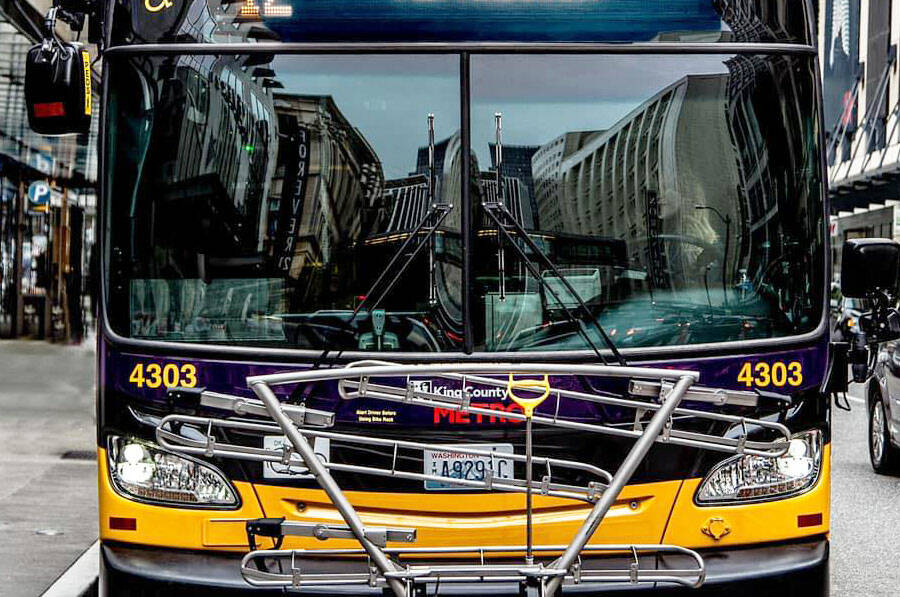A new study found fentanyl and methamphetamine are widely present on public transit in trace amounts, but “not necessarily” at a level that poses a health risk to the public, University of Washington researchers said Sept. 7.
Five transit agencies — Everett Transit, Sound Transit, Community Transit, King County Metro and TriMet — sponsored the first-of-its-kind study where researchers assessed the drug levels of air and surface samples from 11 buses and 19 train cars. Researchers sampled vehicles when riders most likely used drugs, based on past incident reports.
Of 78 air samples, researchers detected fentanyl in 20 samples and detected methamphetamine in all samples. And of 102 surface samples, researchers detected fentanyl in about half, and detected methamphetamine in nearly all samples.
“Just because we can measure it in the lab does not necessarily mean that it’s at a level that poses a health risk to operators or riders,” Marissa Baker, who worked on the study as an occupational health researcher, told reporters. “There isn’t a lot of research as to what levels may cause health effects and after how much time, but at the level seen in this study, there is no clinical evidence of acute medical condition that would result from these passive exposures.”
Baker said no enforceable state or federal regulations exist for workplace exposure to methamphetamine or fentanyl. Health officials say riding public transit remains safe.
“It’s important to have studies like this one from the University of Washington to help identify when there are new substances that may be circulating in our indoor environments,” said Dr. Faisal Khan, Director of Public Health – Seattle & King County, in a prepared statement. “When someone uses fentanyl or methamphetamine, the concentration of leftover drug in the air is minimal. Therefore, secondhand exposure to low levels of residue in the air is unlikely to lead to negative health effects.”
King County Metro and Sound Transit also released statements in response to the results of UW’s study.
Sound Transit reports that it is already partnering with the King County Sheriff’s Office to enforce the agency’s code of conduct, and has seen a decline in incidents since the spring. Sound Transit and King County Metro also have a partnership in the cleaning of light rail vehicles, according to the agency.
In addition to adopting stricter cleaning policies for its vehicles, King County Metro reports that “buses are outfitted with MERV-11 and MERV-13 filters, the best possible filtration available for transit vehicles and capable of filtering airborne viruses and drug smoke particulates. We are in the process of converting the remaining 448 buses from MERV-11 to MERV-13 in the coming weeks,” according to a prepared statement.





